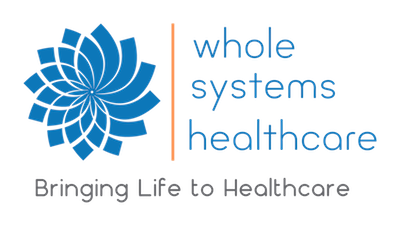Imagine going to the your regular doctor’s office without worrying whether or not your insurance is accepted, what your co-pay is, whether or not you’ve reached your deductible, or if your treatment will be guided by what your insurance allows. Then imagine having a trusted, consistent doctor that you and your family can count on to be available to see you exclusively as needed. This is the potential of direct primary care.
How Direct Primary Care Works
Instead of accepting insurance for routine visits and treatments, a direct care clinic charges a monthly membership fee that covers what the average patient needs for primary care services. Also included in your membership could be laboratory work up, routine screening exams, in house products and generic pharmaceuticals at cost. After developing a relationship with a particular provider you trust, you could become one of their exclusive patients from a capped maximum they could be responsible caring for. This system would guarantee you personal coverage, continuity of care, consistency, and prompt office visits reserved for you in the event you become ill.
Similar to any other membership model, you participate because it brings high value to you—gym membership in exchange for access to equipment and classes; shopping memberships for deals and shipping expedience; entertainment memberships for wide ranging selection and on-demand consumption; cellphone or internet access for communication and information; a news or publication membership for content relevant to you; and so on. It is time that medicine joins the ranks of decentralized market places, where the value that your health and well being brings to your life is reserved for an environment of your choosing, with the provider of your choosing and without insurance interference or worry.
For Your Provider
Primary-care doctors in the traditional model of insurance and fee-for-service are pressured and incentivized to see more patients for less time to maximize profits for the hospital groups and clinics for which they are employed. A doctor working in a direct primary care model, now disassociated from the insurance model, can focus solely on his or her patients that are part of the membership model. Direct care means that doctors can have simplified visits with patients and leave the oft excessive stress of the traditional model behind. A rushed, stressed, and burned out doctor is becoming the norm in our healthcare system, which can compromise the quality of care you receive. However, this is not how it has to be. Primary care services can exist in a model that frees doctors to be what they were trained to be, doctors.
Having Insurance with Direct Primary Care Memberships
It is important to note that you may still have an independent or employer insurance plan while participating in a direct primary care membership in order to cover costs beyond primary care services such as emergencies, medical procedures, specialty referrals, pharmaceuticals, and so on. The analogy used often for direct care and having supplemental coverage is that of your car insurance: your car insurance is paid out in case of unfortunate circumstances such as accidents or other damages, but it is not to cover basic services such as oil changes, tire rotations, and gasoline.(1) Your car insurance will never dictate when you get oil changes, tire rotations or a fill up at the gas station, and neither should medical insurance companies. Your basic primary care and health restoration services should be untethered from insurance oversight for both you and your doctor. Having medical insurance is for peace of mind and access to basic office visits.
The issue is that premiums and deductible plans can be quite expensive or even unaffordable for the average person or family. According to a Kaiser survey from 2018, 85% of workers have a deductible, the out of pocket cost before insurance picks up the rest of the bill, with an average of $1,573 for single coverage.(2) The same survey found that, from the previous year, the average annual premium for single coverage rose 3 percent to $6,896 and the annual premiums for families’ coverage rose 5 percent to $19,616.(2) These high deductible prices are commensurate to the increasing costs of medical supplies, procedures and drugs billed to insurance. Unfortunately, people with low and moderate incomes may simply decide to go without insurance if it competes with other critical living expenses like housing, food, and education.(3) People are discouraged from accessing healthcare when needed due to the untenable costs, delaying treatment until symptoms become unmanageable, finally presenting to a provider and racking up an exceptionally costly bill.(3)
Direct Primary Care is Here to Stay
The current scenario of primary healthcare in the United States has reached a point of such dissatisfaction and excessive cost that a new approach to health coverage, parallel to the broken system, must be introduced as an option to a wider audience. Direct primary care offers a relative solution to the issues inherent in the insurance, fee-for-service model that is currently the norm. This traditional system asks the average person to most often pay thousands of dollars annually for premiums and deductibles, co-pay and co-insurance fees at the doctor’s office—in exchange for the insurance company to dictate what will be covered and how long your provider can spend with you—if the doctor themselves want to earn a living. This usually translates to a brief, superficial and disheartened office visit because the provider has to move on to their next patient. Primary care does not have to be this way. Direct primary care retrieves the autonomy of both patient and doctor. A patient is asked to choose the clinic they want, the provider they want and the type of services they want, in exchange for an affordable monthly membership fee. The provider also wins in this scenario because they are able to develop rapport and trust with patients, spend the time they want and need for complex cases, and free themselves from the complexity of insurance billing so they can spend more time focusing on their patients.
Talk to your Whole Systems Healthcare clinic about establishing yourself as a direct primary care member.
References
- Ramsey L. A new kind of doctor’s office charges a monthly fee and doesn’t take insurance—and it could be the future of medicine. Business Insider. March 19 2017.
- Kaiser Family Foundation. 2018 Employer health benefits survey. 2018. https://www.kff.org/health-costs/report/2018-employer-health-benefits-survey/ Accessed June 20, 2019 Google Scholar
- Collins S, Radley D. The Cost of Employer Insurance Is a Growing Burden for Middle-Income Families. Commonwealth Fund, Dec. 2018.



